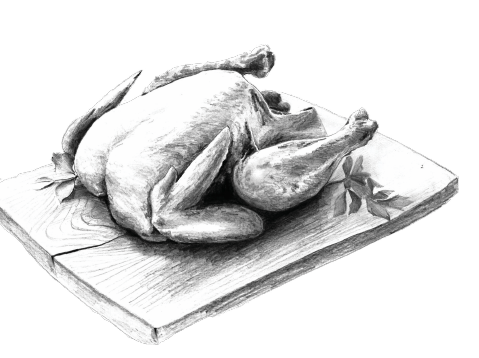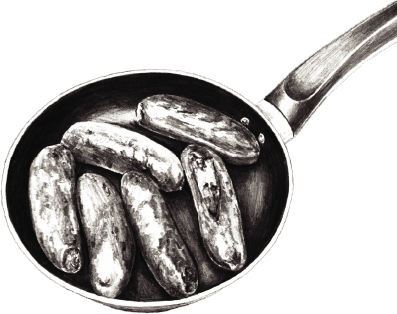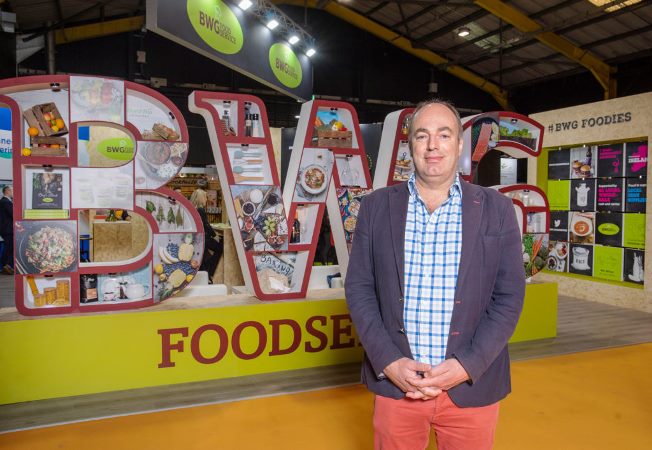
The Mind of the Palate with BWG Foodservice
Professor Spence was invited to Catex by ourselves and has been giving fascinating mini-symposia at regular times throughout the event. Spence is perhaps best known for his work with Heston Blumenthal, and Sound of the Sea, the dish they created in 2007, has been on the Fat Duck’s menu ever since.
While the seafood varies with the season, the appearance of the dish has remained much the same – with edible sand and foam surrounding the seafood (and actual sand visible below it through a glass tray), plus a large conch shell with headphones which plays seagulls and crashing waves to evoke a seaside atmosphere while you eat tasty morsels that originated there.
“It may seem obvious to us now that the sound of the sea would enhance the experience of eating shellfish, but it simply wasn’t before we did it in 2007,” says Spence.
Spence is proposing nothing less than “a new science of eating”, where restaurants and food manufacturers are encouraged to examine everything about food beyond its flavour – how it sounds when you eat it, the plate or bowl it is presented in, and literally everything else from the ambient sound to the lighting to the eating utensils.
Jozef Youssef, of Kitchen Theory in High Barnett in North London, has taken Spence’s science of gastrophysics to the next level and offers a 10 course tasting menu with projection mapping of the sea onto your table, while you eat jellyfish with a tweezers (“Cutlery is boring!” declares Spence) as well as playing with sounds, textures and visual elements throughout the meal.
On a practical level for restaurants, Spence is quick to admit that most will not be able or willing to put in projectors, adjustable mood lighting or directional microphones over every table to enhance the senses of diners, but he believes they should at the very least pay attention to cutlery and plates, if not necessarily designing a new plate for every dish.
“It is a fact that heavier cutlery enhances the dining experience,” he says, “And don’t underestimate the plate – in a study we did with Ferran Adria in 2012 we found the plate really does make a difference – a sweet strawberry dessert tastes less sweet on a black plate than on a white plate and subsequent studies have replicated this – for example we now know that chilli tofu tastes spicier on a red plate.”
Spence believes that the avenues for research are endless. “Can we accentuate the texture or flavours of a food by the plate it is on, what about in first class on an airline – can the plate enhance flavours to compensate for the dulling down of our senses that occurs in flight?”
The Fat Duck is leading the way in this of course, and recently commissioned special plates for dishes to enhance certain flavours – for example, a round pink softly shaped bowl for sweet foods and a darker bowl with a rough texture (to be held in the hand) for spicy foods. The Fat Duck also has a dessert spoon covered in fluff but with extra weight and added sweet heliotrope aromas that are released once the utensil is grasped.
Spence was also rather dismissive of companies who posit that every wine style deserves its own glass shape. “If you don’t let people see the glass or touch it, then grape specific glasses perform no better than random – seeing and holding the glass is what seems to make the difference, not the shape,” he says. “It really is all in the mind,” he repeats.
Spence’s work is fully science-based and his experiments have been replicated by other scientists, so this is not speculative chicanery. His book Gastrophysics (https://www.kennys.ie/results/?q=gastrophysics) published in 2017 is recommended for everyone in the food world, from chefs to diners to food manufacturers.
For his next trick Spence is hoping to focus on coffee, which has more volatile aromas than wine and yet no research has been done on the most suitable drinking vessel. “With 4 billion cups of coffee drunk every day it is about time someone tackled the issue,” he says.
If you are at Catex definitely drop over to the our stand and try eating some ginger biscuits while rubbing sandpaper, and then while rubbing silk see which tastes better – you will be surprised.
Turn your summer up a notch with William’s Gate
Embracing barbecue trends can set you apart this summer. William’s Gate, our company-owned supplier of high quality meats to food businesses all over Ireland, will help you to add exciting barbecue dishes to your summer menu. This year brings exciting trends that cater to evolving consumer preferences and innovative culinary techniques. Read on to discover…
Birria Beef Blaa Recipe
INGREDIENTS: FOR THE MARINADE45g fresh chilli peppers90g chipotle chilli paste150ml red wine vinegar1.2kg tin chopped tomatoes12 garlic cloves15g dried oregano1/2tbsp smoked paprika15g cumin1.5kg short ribs1.5kg beef shankSalt and black pepper FOR THE SAUCE90g olive oil3 onions, chopped3 cinnamon sticks12 cloves7lt beef stock, enough to cover the meat FOR THE SALSA18 ripe tomatoes, diced3 white onions,…
Explore ‘A Taste of Christmas’ with Barry O’Flaherty
As part of our ‘A Taste of Christmas’ campaign, which aims to provide festive menu solutions to foodservice businesses throughout the country, we caught up with Barry O’Flaherty, experienced Chef and William’s Gate Protein Specialist, to find out his thoughts and insights on the upcoming Christmas rush… Tell us a little bit about your current…
Autumnal Pumpkin Spice Delights
Pumpkin Spice Latte Ingredients:15ml Pumpkin Spice Syrup150ml Steamed MilkEspresso ShotWhipped CreamCinnamon Dusting Method: Extract the shot of espresso into the cup and add the Pumpkin spice syrup.Top with steamed and textured milk.Finish with whipped cream and cinnamon dusting. Pumpkin Spice Highball Ingredients:35ml Whiskey10ml Pumpkin Spice100ml Ginger AleIceLime Wedges Method:Pour Pumpkin syrup into a glass. Add the…
Announcing Our 2023 Irish Quality Food Awards Winning Products!
Plant Based Chocolate Ganache Ice Cream (IQFA Foodservice Product of the Year) Our chocolate ganache is inspired by a small family run gelatoria in Florence, Italy. Using 64.5% couverture dark chocolate which provides a beautiful balance of bitter and sweet with a mild cocoa flavour, we paired this with alkalised 22% fat cocoa powder. Once…
Ultimate Steak Sandwich Recipe
Ingredients 676945 Delifrance Pre-Sliced Ciabatta 696767 William’s Gate Exclusive Beef Striploin Roast Approx. 6-7kg 703609 Follain Onion Marmalade 529545 Blenders Real Mayo 705550 Rocket Leaves 638088 White Grated Cheddar 663396 Chef’s Kitchen Salt 684697 Chef’s Kitchen Cracked Black Pepper 501981 Basso Extra Virgin Olive Oil Method For the Beef:Remove beef from the fridge 1 hour…
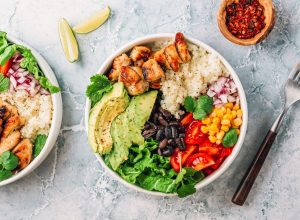
Embracing Customisable Menus for a Personalised Dining Experience
Personalisation has become a defining trend in today’s foodservice industry. With increasingly diverse dietary needs and lifestyle choices to flavour preferences, today’s diners expect more than just a set menu – they want options tailored to them. From swapping ingredients to building meals from scratch, customisation is reshaping how we approach eating out. For chefs…
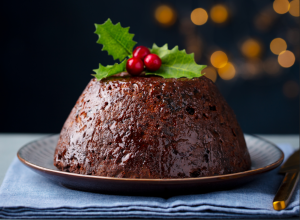
Christmas 2024 Food & Drink Trends to Watch
As the festive season approaches, it’s time for foodservice operators to gear up for the busiest time of the year. Christmas is expected to be a celebration of indulgence and culinary creativity. From plant-based options to traditional Christmas plates with a modern twist, the trends shaping this year’s food and drink market offer something for…
Individual Mushroom, Lentil and Root Veggie Pies
Makes 4 individual pies For the filling: 30ml olive oil 125g onion, finely chopped 250g leek, washed 120g carrots, finely chopped 1 garlic clove, peeled and finely chopped 15g thyme 15g rosemary Salt and black pepper 200g mushrooms, chopped 400g green lentils 15g soy sauce 400g tin of chopped tomatoes 250ml vegetable stock 150ml red…
Join the Club
Sign up to receive our latest news
